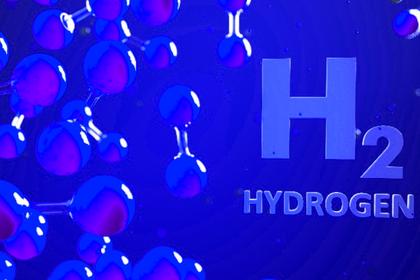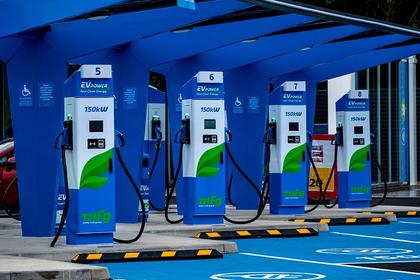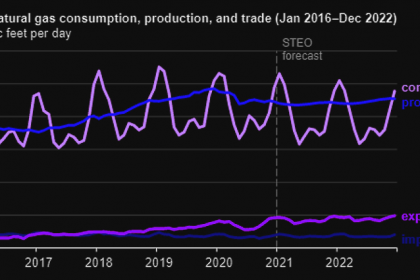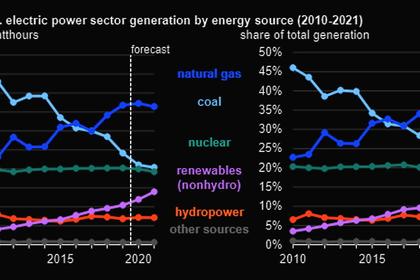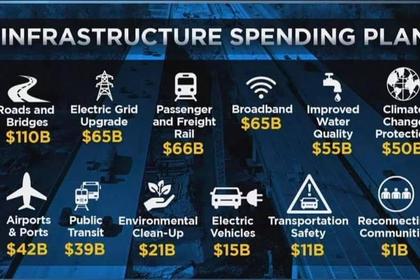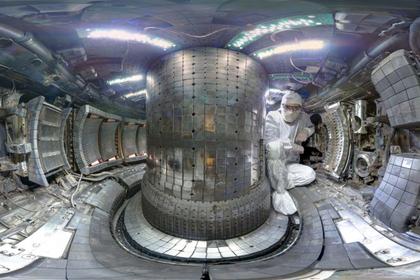
U.S. CLEAN ENERGY TRANSITION STRATEGY
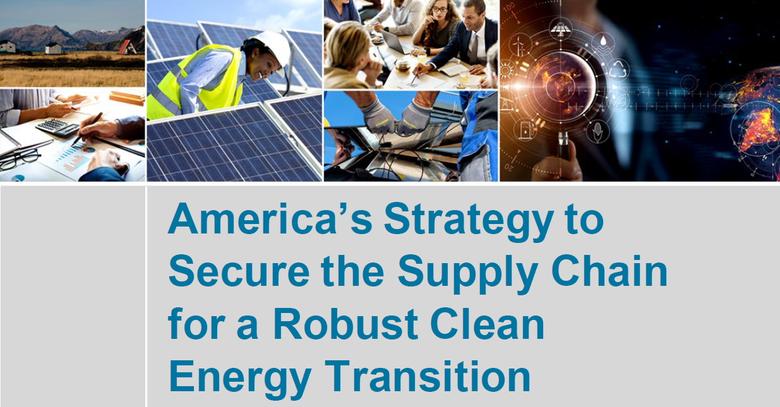
U.S. DOE - FEBRUARY 24, 2022 - America’s Strategy to Secure the Supply Chain for a Robust Clean Energy Transition
Executive Summary
The opportunity for U.S. global leadership on clean energy is enormous. On February 24, 2021, President Biden issued Executive Order 14017, “America’s Supply Chains,” directing the Secretary of Energy to submit a supply chain strategy overview report for the Energy Sector Industrial Base (ESIB). This report lays out the myriad challenges and opportunities facing the energy supply chain along with key strategies to secure America’s position as a clean energy superpower in the years and decades to come.
The challenges are immense for the United States related to: raw material availability; manufacturing capacity; dependence on foreign supplies; worker training; global trade practices; cybersecurity; and research and data analysis needed to create the clean energy economy we need. But the opportunities to address the energy supply chain are also immense for the American people: millions of family-sustaining clean energy jobs spread throughout the country; world-class training and research; access to clean and lower-cost energy for all Americans, including those who have been historically left behind; a more resilient American economy for the long term; and an energy system that protects our climate.
The climate crisis poses an existential crisis to American and global national security and economic interests. It also presents a tremendous opportunity for American innovation, allowing for a reinvestment in the American manufacturing base and for the widescale creation of high-quality jobs in the clean energy economy. The United States has committed to an ambitious and achievable goal to reduce net greenhouse gas (GHG) emissions 50 to 52 percent below 2005 levels by 2030, create a carbon pollution-free power sector by 2035, and achieve net zero emissions economy-wide by no later than 2050. The U.S. Department of Energy (DOE) recognizes that sustained investment to build a secure, resilient supply chain will be critical in achieving these goals and capturing the economic opportunity inherent in the energy sector transition.
DOE defines the ESIB as the energy sector and associated supply chains that include all industries, companies and stakeholders directly and indirectly involved in the energy sector.
The ESIB involves a complex network of industries and stakeholders that have a nexus to energy, including extractive industries, manufacturing industries, energy conversion and delivery industries, end of life and waste management industries, and service industries that include providers of digital goods and services. This report examines each of these arenas.
This supply chain review identified a range of risks and vulnerabilities that vary by technology and will require a sweeping set of diverse policy actions. In addition, DOE identified common threats, risks, and vulnerabilities across all selected technologies. These common risks and vulnerabilities are grouped into seven main opportunities for action: 1) increase raw material availability, 2) expand domestic manufacturing capabilities, 3) support formation of and invest in diverse, secure, and socially responsible foreign supply chains, 4) increase the adoption and deployment of clean energy, 5) improve end-of-life energy-related waste management, 6) attract and support a skilled workforce for the clean energy transition, and 7) enhance supply chain knowledge and decision-making. Together, they create the “Strategy to Secure the Clean Energy Transition” that DOE will work with other Federal agencies to implement.
Finally, an analysis of the global energy marketplace shows that many governments and government coalitions have adopted coordinated, government-led strategies and industrial policies to advance and unlock significant investment in key supply chain segments. One example is China’s investment in domestic cobalt production and processing paired with investment in international raw material inputs that enabled China to corner a significant market share in cobalt processing. Through this report, DOE maps out a strategy to rapidly secure the critical supply chains necessary to meet economic, national security, and climate goals. The policy strategies in this report are informed by 13 supporting deep dive supply chain assessment documents conducted by researchers from DOE and several of its national laboratories, in consultation with stakeholders across the public, private, and social sectors. In addition to targeted consultation, the policy strategies are informed by comments received on a formal request for information (RFI) issued by DOE.
-----
Earlier:
